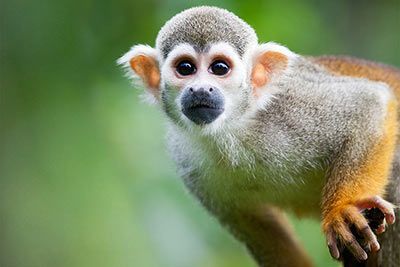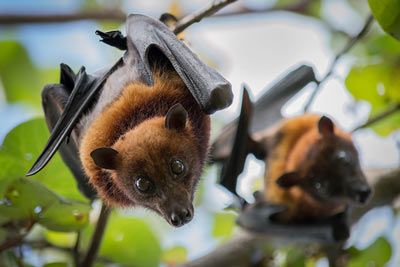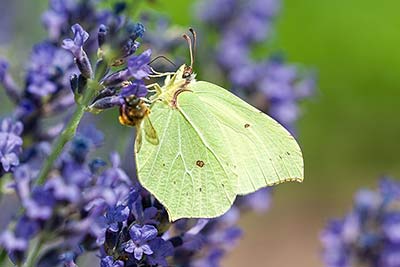Polar Bear
Polar Bear Facts
| Size | 78 to 98 in (200-250 cm) (body); 62 in (160 cm) (shoulder height) |
| Speed | 25 mph (40 km/h) (on land); 3 mph (5km/h) in water |
| Weight | 880 to 1,100 lbs (400-500 kg) |
| Lifespan | 20-30 years |
| Food | Seals, salmon, lemmings |
| Predators | - |
| Habitat | Arctic region |
| Order | Carnivore |
| Family | Bears |
| Scientific name | Ursus maritimus |
| Characteristics | White fur, webbings |
Main Characteristics
The polar bear is one of the biggest bears in the world. Only the brown bear and the Kodiak bear in Alaska reach a similar size.
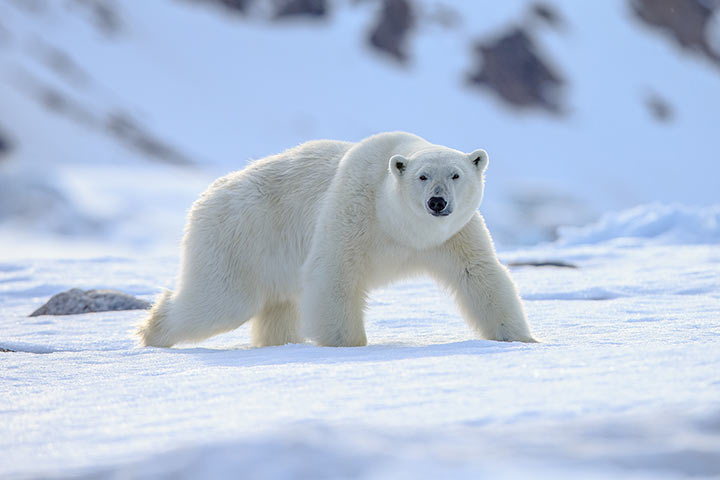
Distribution and Habitat
Polar bears live exclusively in the Arctic (= around the North Pole). 60% of polar bears live in northern Canada. The other 40% are spread across Alaska, Greenland, Russia and Svalbard. There are no polar bears in Antarctica (= at the South Pole).

Anatomy and Appearance
Size and Weight
Polar bears weigh between 880 and 1100 pounds (400 and 500 kg). Their body length is between 78 to 98 inches (200-250 cm) and the shoulder height is 62 inches (160 cm).
Coat
Although the coat of the polar bear appears to be white, its hairs are actually transparent and hollow inside. There is a good reason for this: The warmth of the sunlight can directly reach the skin. To clean their coat, polar bears simply wallow in the snow.
Skin
Surprise! The skin under their fur is black. This is because black retains heat best.
Fat Layer
Polar bears have a thick layer of fat that keeps them warm in the Arctic. It grows up to 4 inches (10 cm) thick.
Paws
Polar bears have big paws. Its toes are webbed to move faster in the water. The front paws are shovel-shaped. It sets the pace with them. It steers with his hind paws. The paws are 11 to 12 inches (30 cm) long. This also has a major advantage when walking: its weight is evenly distributed so that it doesn't sink in the snow or collapse on thin ice.
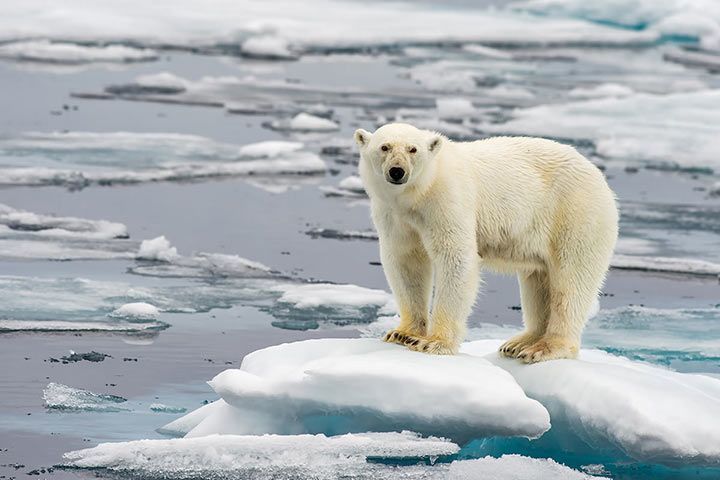
Diet
Polar bears feed mainly on seals. But they also eat weak walruses. They also prey on small rodents such as lemmings, voles and ground squirrels. They also catch fish occasionally.
Behavior
Swimming
The record for the longest distance a polar bear swam is 426 miles (687 km) in nine days. It swam 232 hours non-stop. This was reported by the United States Geological Survy (USGS) in Polar Biology magazine in 2008. Usually the animals do not swim such long distances because it is very exhausting for them. However, this is happening more and more due to climate change.
Diving
Polar bears are good swimmers, but they can only stay underwater for about 2 minutes. Then they have to surface again to catch their breath. They usually do not dive deeper than 6 to 7 feet (2 m).
Hunting Strategies
Polar bears don't hunt in water. Instead, they wait at holes in the ice until seals resurface to breathe. Then they strike. Sometimes they wait for hours for a seal to appear. Another hunting technique is stalking. The polar bears crouches and then creeps the last few feet over the ice. Then they suddenly rush to grab their prey.
What Do Polar Bears Do in Winter?
Between October and February there is almost total darkness in the Arctic. But the animals do not hibernate. Seals are plentiful, so they spend a lot of time hunting and feeding. Only female polar bears that are pregnant hibernate. They stay in a cave during the winter.
Do Polar Bears Sweat?
In the Arctic, temperatures range from -58 degrees Fahrenheit (-50 degrees Celsius) in winter to 68 degrees Fahrenheit (20 degrees Celsius) in summer. During the winter, the coat keeps the bear cozily warm. Yet, during the Arctic summer, the animals often get too warm. To cool down, they lie down in the snow or on the ice on their backs and lift their feet up in the air. They lie down, even when only walking short distances. Sometimes they even jump into the icy (!) waters to refresh themselves.
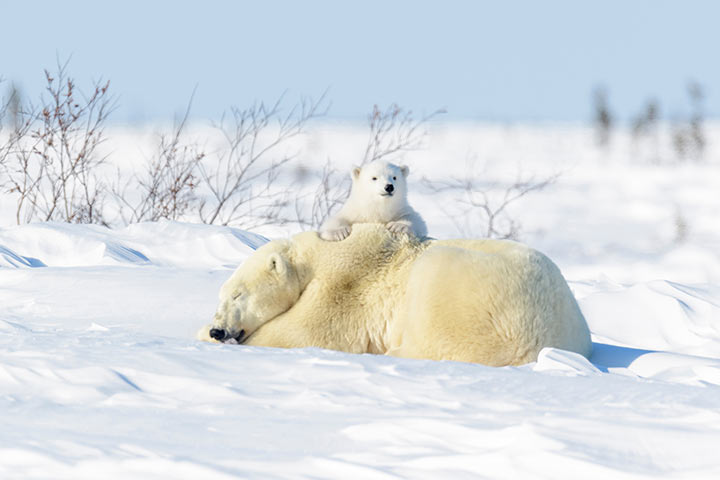
Enemies and Threats
For polar bears, climate change is the greatest threat. They need pack ice on which to rest, hunt, feed, and breed. After all, it is not a marine mammal that spends the whole day in the water. The pack ice is melting due to climate change, so that the animals have to migrate south to the mainland. However, it actually hunts seals and is less successful in hunting on the mainland. Experts estimate that polar bears will be extinct by the year 2100.
Senses and Abilities
Polar bears have the best sense of smell. They can smell seals up to one mile away. They also have a very good hearing.
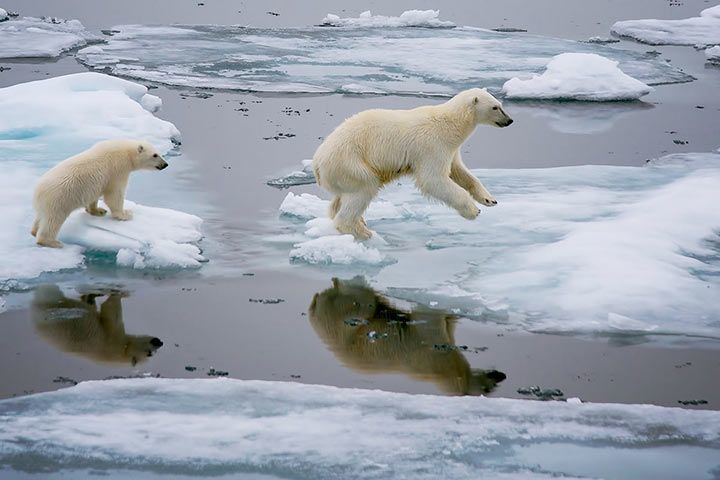
Reproduction
Polar bear cubs are blind and deaf at birth. They only weigh 14 to 31 ounces (400-900 grams). Due to the high-fat breast milk, however, they already weigh 22 to 33 pounds (10-15 kg) after two months. At this point, the young animals are allowed outside for the first time. They continue to nurse until they are 2.5 years old. During this time, their mother also teaches them how to hunt.
Fun Facts
All polar bears are "left-pawed".
The Polar Bear Is Related To:
Animals in the Same Biome:
- Watch Now on animalfunfacts.net:
 How Do Animals Survive in the Arctic?
How Do Animals Survive in the Arctic? Endangered Animal Species
Endangered Animal Species
- Find Out More:
- Animals that Use Awesome Tricks to Survive the Winter
















